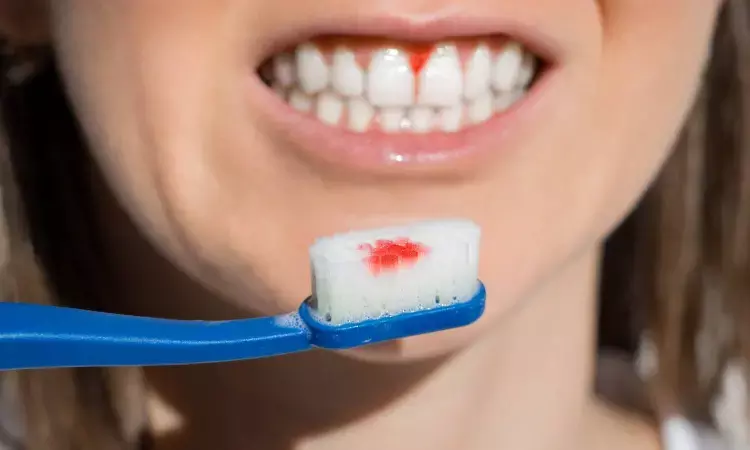- Home
- Medical news & Guidelines
- Anesthesiology
- Cardiology and CTVS
- Critical Care
- Dentistry
- Dermatology
- Diabetes and Endocrinology
- ENT
- Gastroenterology
- Medicine
- Nephrology
- Neurology
- Obstretics-Gynaecology
- Oncology
- Ophthalmology
- Orthopaedics
- Pediatrics-Neonatology
- Psychiatry
- Pulmonology
- Radiology
- Surgery
- Urology
- Laboratory Medicine
- Diet
- Nursing
- Paramedical
- Physiotherapy
- Health news
- Fact Check
- Bone Health Fact Check
- Brain Health Fact Check
- Cancer Related Fact Check
- Child Care Fact Check
- Dental and oral health fact check
- Diabetes and metabolic health fact check
- Diet and Nutrition Fact Check
- Eye and ENT Care Fact Check
- Fitness fact check
- Gut health fact check
- Heart health fact check
- Kidney health fact check
- Medical education fact check
- Men's health fact check
- Respiratory fact check
- Skin and hair care fact check
- Vaccine and Immunization fact check
- Women's health fact check
- AYUSH
- State News
- Andaman and Nicobar Islands
- Andhra Pradesh
- Arunachal Pradesh
- Assam
- Bihar
- Chandigarh
- Chattisgarh
- Dadra and Nagar Haveli
- Daman and Diu
- Delhi
- Goa
- Gujarat
- Haryana
- Himachal Pradesh
- Jammu & Kashmir
- Jharkhand
- Karnataka
- Kerala
- Ladakh
- Lakshadweep
- Madhya Pradesh
- Maharashtra
- Manipur
- Meghalaya
- Mizoram
- Nagaland
- Odisha
- Puducherry
- Punjab
- Rajasthan
- Sikkim
- Tamil Nadu
- Telangana
- Tripura
- Uttar Pradesh
- Uttrakhand
- West Bengal
- Medical Education
- Industry
New device may make accurate assessment of both presence and extent of gum disease

Periodontal disease caused by infection in the gums increases with age and is leading cause of tooth loss. As it gets more common with age, 50% of 60-year olds will have periodontal disease in at least a mild form.
Gum disease is usually identified in the dentist's chair, when dental hygienists or dentists look for indicators such as tooth movement, sensitivity, gum bleeding or swelling.
Researchers from the University of Birmingham are developing a rapid test for gum disease. They have devised a new technique that could provide a rapid and accurate assessment of both the presence and extent of gum disease from a sample of saliva that can be taken in any healthcare setting.
Their method consists of a specialisd probe and a detector that provides a quantitative measurement of biomarkers that indicate both the presence of gum disease and its severity. The biomarker panel was identified and validated by a team of researchers at the university's Periodontal Research Group and published earlier this year in the Journal of Clinical Periodontology.
The researchers expect the technology, a probe for use in point of care settings such as dental surgeries or pharmacies, to play a pivotal role in early detection of heart or lung disease, type 2 diabetes and rheumatoid arthritis.
However, untreated gum disease also has wide-ranging and serious effects on the rest of the body, where it correlates with an inflammatory response that affects the course of disease in other conditions.
In type 2 diabetes, it increases the risk of heart failure, in cardiovascular disease it increases the risk of stroke or heart failure, in rheumatoid arthritis it increases the severity of disease, and in emphysema (also known as chronic obstructive pulmonary disease or COPD), it increases the risk of irreversible step-changes in disease severity. For people with these conditions, early detection and treatment of gum disease is a priority.
The researchers have received funding from the EPSRC Impact Acceleration Account to develop a prototype of this new device, which is expected to be available within a year.
Professor Albrecht said: "We believe the device we are prototyping will be the first dental probe that can identify periodontal disease in this way. It will detect periodontitis quickly and easily in a variety of healthcare settings, opening up opportunities for monitoring and early intervention in the patients with comorbid disease, who would benefit most from rapid treatment for periodontitis."
Dr Grant said: "The ability to detect and profile disease biomarkers in real time will allow monitoring for disease severity, and in particular the transition between milder and more severe forms of gum disease. This will benefit not only dental health, but also reduce costs and capture patients for whom periodontal treatment may, in the long run, be life-saving."
In the long-term, they expect to develop a probe that is small enough to be inserted into the space between gums and teeth, allowing dentists to collect fluid from specific areas in the mouth, and accurately identify the site of infection.
University of Birmingham Enterprise has filed patent applications covering the probe and the detector, and their use in disease detection and monitoring, and will welcome discussions with companies wishing to license the technology or collaborate in its development.
Reference:
Melissa M Grant, John J Taylor, Katrin Jaedicke, Andrew Creese, Catherine Gowland, Bernard Burke, Khawla Doudin, Upen Patel, Paul Weston, Michael Milward, Susan M Bissett, Helen J Cooper, Gerben Kooijman , Amir Rmaile, Marko de Jager, Philip M Preshaw, Iain L C Chapple, DOI: 10.1111/jcpe.13630
Dr Kamal Kant Kohli-MBBS, DTCD- a chest specialist with more than 30 years of practice and a flair for writing clinical articles, Dr Kamal Kant Kohli joined Medical Dialogues as a Chief Editor of Medical News. Besides writing articles, as an editor, he proofreads and verifies all the medical content published on Medical Dialogues including those coming from journals, studies,medical conferences,guidelines etc. Email: drkohli@medicaldialogues.in. Contact no. 011-43720751


